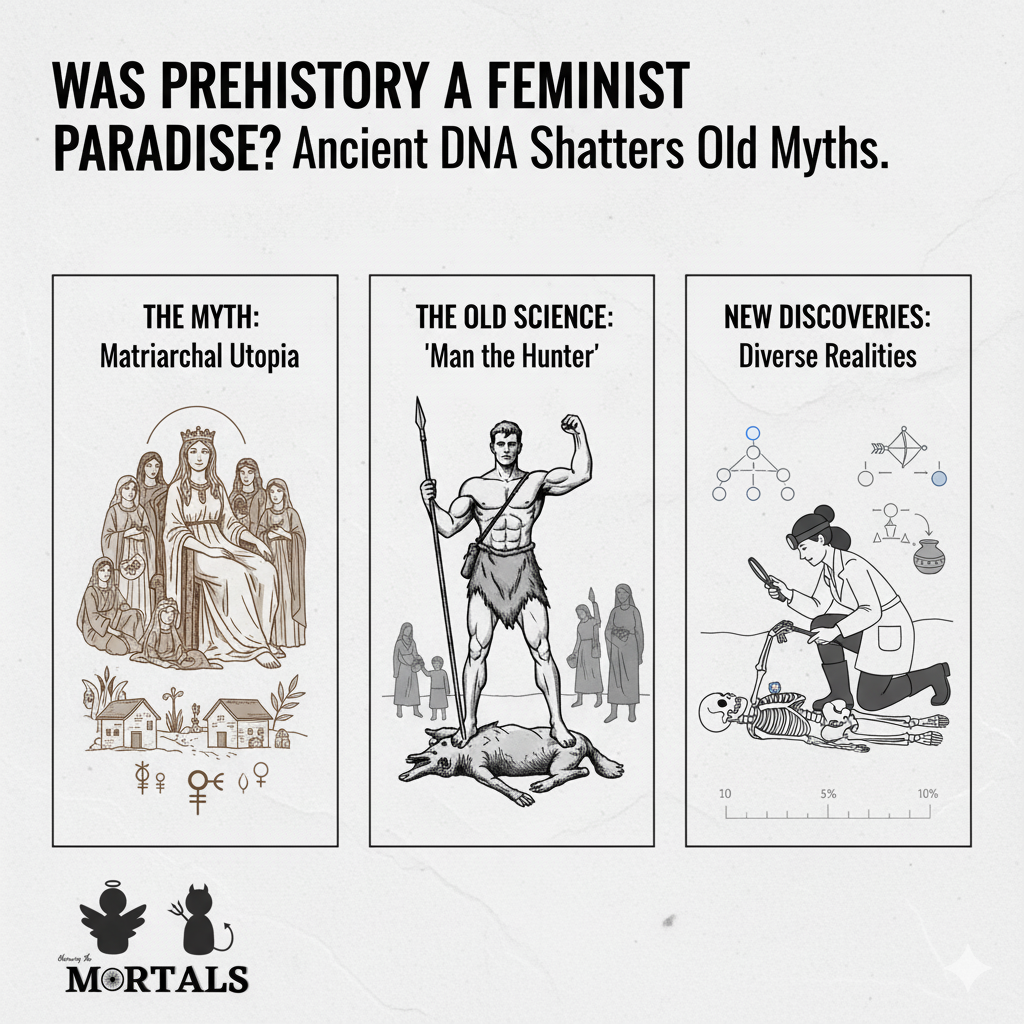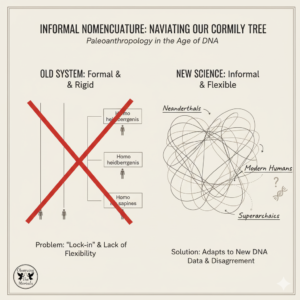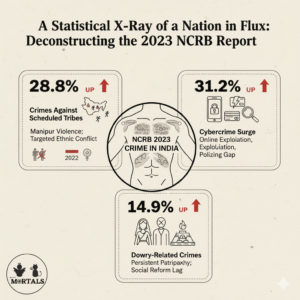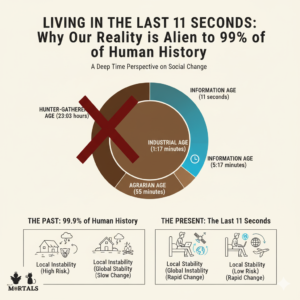There is a powerful and persistent myth of a prehistoric golden age: a time when women ruled, societies were peaceful, and gender equality was the norm, before the dawn of patriarchy changed everything. For decades, this idea of a lost matriarchal utopia has been a source of both romantic fascination and political inspiration. But was it real? For a long time, anthropology and archaeology lacked the tools to say for sure. Now, the “Ancient DNA Revolution” is allowing scientists to read the stories hidden in ancient bones, and the picture emerging is far more complex, and ultimately more interesting, than any simple paradise.
The Information Box
Syllabus Connection:
- Paper 1: Chapter 9.6 (Feminist Anthropology), Chapter 2.5 (Kinship: Matriliny/Patriliny), Chapter 4 (Political Anthropology: Power), Chapter 1.3/1.8 (Archaeological Methods)
Key Concepts/Tags:
- Matriarchy, Matrilineality, Ancient DNA, Isotope Analysis, Feminist Anthropology, Engels, Gimbutas
The Setting: Who, What, Where?
This case study is situated at the cutting edge of Feminist Archaeology and Anthropology, a sub-discipline that re-examines the past to uncover the often-hidden roles and status of women. It critically evaluates the grand, sweeping narratives of 19th and 20th-century theorists like Friedrich Engels (who linked patriarchy to agriculture) and Marija Gimbutas (who proposed a patriarchal invasion of “Old Europe”). The new evidence comes from the application of modern scientific tools—ancient DNA analysis and isotope analysis—to archaeological remains from sites across the world, including Chaco Canyon (USA), ancient China, and Iron Age Britain.
The Core Argument: Why This Study Matters
This is a story of how new science is revolutionizing our understanding of gender in the deep past, moving beyond speculation to evidence-backed claims.
- Debunking the Myth of a Single “Switch”: The primary argument, backed by new genetic evidence, is that there was no single, universal matriarchal past, nor was there a single historical moment when a “switch” was thrown to patriarchy. The new data reveals that diversity was the rule. Different gender systems, some more egalitarian than others, coexisted and changed over time.
- Matrilineality is Real, but Matriarchy is Rare: The evidence from ancient DNA and isotopes confirms that matrilineal (descent and inheritance traced through the female line) and matrilocal (women remaining in their home community after marriage) societies were common across the globe. These systems are clearly associated with higher female status and influence. However, the analysis makes the crucial anthropological distinction that this does not equal matriarchy (formal political rule by women). Power in these societies often still rested with men—just a different set of men (a woman’s brothers and uncles instead of her husband and his family).
- Women’s Roles Were Diverse and Powerful: There is a wealth of recent archaeological findings showing that women in the past were also hunters, warriors, and powerful shamans. This directly attacks the rigid, stereotypical model of “Man the Hunter” and “Woman the Gatherer,” proving that gender roles were far more flexible and less universally defined than previously assumed.
- Redefining “Power”: The research forces a more nuanced definition of power. It asks us to look beyond formal, public authority and consider the significance of “soft power”—the ability of elite women in both patrilineal and matrilineal societies to shape political decisions through counseling, patronage, and kinship networks.
The Anthropologist’s Gaze: A Critical Perspective
- The Danger of a New Myth: A critical perspective would caution against creating a new, equally simplistic myth. While the past was diverse, this does not mean it was free of gender inequality. We must avoid simply replacing the myth of a universal patriarchy with a romanticized myth of a universally diverse and flexible past. Patriarchal structures, even if not universal, have been extremely common and durable.
- The Limits of the Data: Even with ancient DNA, there are limits to what we can know. These powerful tools can tell us about biological sex, kinship, and mobility. They cannot directly tell us about gender identity, who made the final decision in a household, or the emotional content of relationships. Gender ideology is one of the most difficult things to reconstruct from material remains alone.
- The Politics of the Past: The entire debate, from Engels in the 19th century to feminists today, shows that our interpretations of the prehistoric past are often deeply shaped by our present-day political concerns. The search for a non-patriarchal past is itself a political act, driven by a desire to show that our current system is not natural or inevitable.
The Exam Angle: How to Use This in Your Mains Answer
- Types of Questions Where It can be Used:
- “How have new scientific methods in archaeology changed our understanding of prehistoric societies?”
- “Critically evaluate the contributions of feminist anthropology to the discipline.”
- “Distinguish between matrilineal and matriarchal systems with ethnographic or archaeological examples.”
- Model Integration:
- On Feminist Anthropology: “Feminist anthropology, now aided by the ‘Ancient DNA Revolution,’ is rewriting our understanding of gender in prehistory. New evidence from sites like Chaco Canyon confirms the existence of matrilineal societies, while also forcing a more nuanced definition of power that moves beyond formal rule to include the ‘soft power’ exercised by women.”
- On Kinship Systems: “The distinction between matrilineality and matriarchy is crucial. While ancient DNA has confirmed that matrilineal descent systems were widespread in the past, as seen in Iron Age Britain, this did not necessarily mean women held formal political power (matriarchy). Often, authority simply shifted from a woman’s husband to her brother.”
- On New Methods: “New scientific methods are challenging old, grand theories. The ability to genetically sex ancient skeletons and trace their mobility through isotope analysis has largely disproven the simplistic, universal ‘matriarchy-to-patriarchy’ switch proposed by 19th-century thinkers, revealing a much more diverse and complex picture of prehistoric gender relations.”
Observer’s Take
The question “Was prehistory a feminist paradise?” is probably the wrong one to ask. As new scientific tools peel back the layers of time, they are revealing something far more interesting and powerful than a simple utopia. The past was not a monolithic patriarchy, nor was it a global matriarchy. It was a complex, diverse tapestry of different ways of being men and women. The real takeaway is not that women once ruled, but that the way we live now is not inevitable. The evidence from our ancient bones proves that patriarchy is not our biological destiny; it is a cultural choice. And as our ancestors have shown us, other choices are, and have always been, possible.
Source
- Title: Was prehistory a feminist paradise?
- Author: Laura Spinney
- Publication: The Guardian





